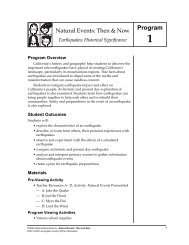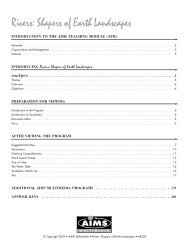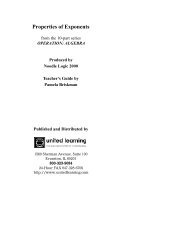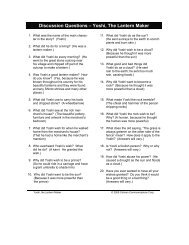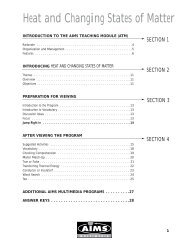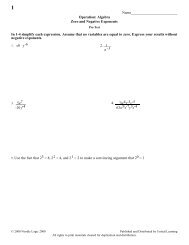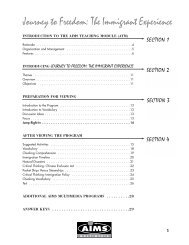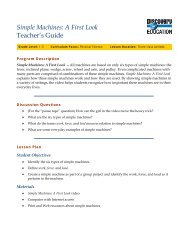THE CIRCULATORY SYSTEM - Discovery Education
THE CIRCULATORY SYSTEM - Discovery Education
THE CIRCULATORY SYSTEM - Discovery Education
You also want an ePaper? Increase the reach of your titles
YUMPU automatically turns print PDFs into web optimized ePapers that Google loves.
It is the job of the circulatory system to transport food and<br />
oxygen to the cells and then to collect waste products so<br />
that they can be eliminated from the body. This system<br />
operates non-stop from before birth to death. If deprived<br />
of oxygen for just a few minutes, a cell will begin to die.<br />
This system is crucial to survival.<br />
The circulatory system is made up of three main parts or<br />
components: the heart, the blood, and the vessels through<br />
which the blood flows. Let’s begin our exploration by looking<br />
at the heart.<br />
<strong>THE</strong> HEART<br />
The heart is about the size of an adult’s fist and is located<br />
just to the left of the center of a human’s chest. The heart is<br />
protected by the rib cage. More than fifty percent of the<br />
heart’s weight is muscle. However, this is a special muscle<br />
called the cardiac muscle. It is made of muscle fiber that<br />
doesn’t become tired or fatigued after prolonged use.<br />
Muscles in your arms and legs are different, and after<br />
strenuous use they become fatigued. The heart can never<br />
become tired because it is constantly working night and<br />
day for your entire life.<br />
It beats at about 70 beats per minute during times of rest.<br />
During each of these beats, about 70 milliliters of blood are<br />
pumped out to the body. This graduated cylinder contains<br />
70 milliliters of colored water to give you an idea of<br />
how much blood is pushed out of the heart with every beat.<br />
The rate of beating is controlled or regulated by an area of<br />
nerve tissue located in the upper-right side of the heart.<br />
This area is called the pacemaker and sends out signals to<br />
the heart muscle causing it to contract. If something happens<br />
to the pacemaker, an artificial or human-made pacemaker<br />
can be used, either inside the body or on the outside<br />
to send the necessary signals for heart movement.<br />
12



